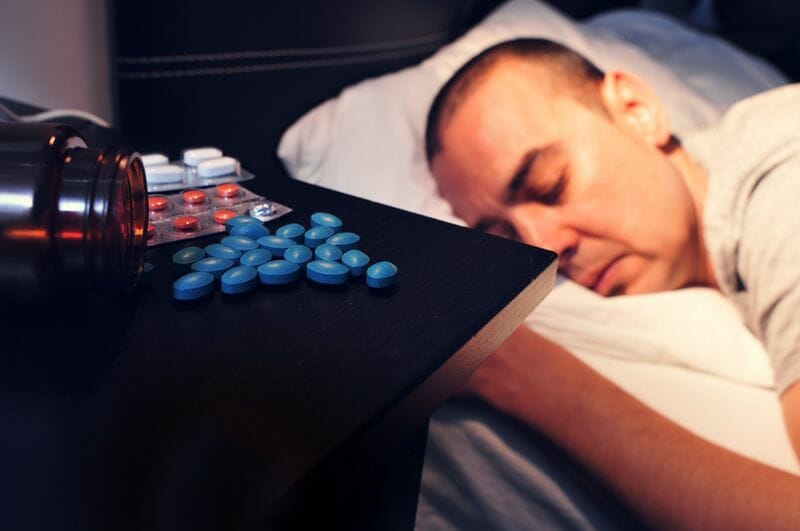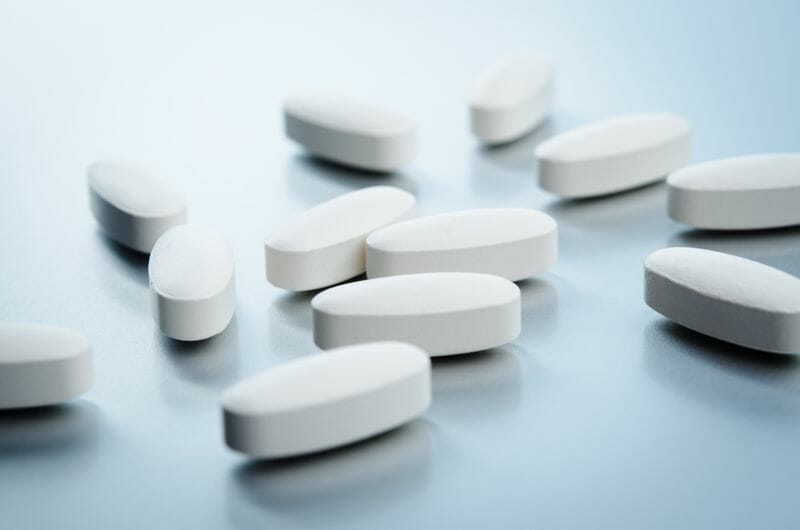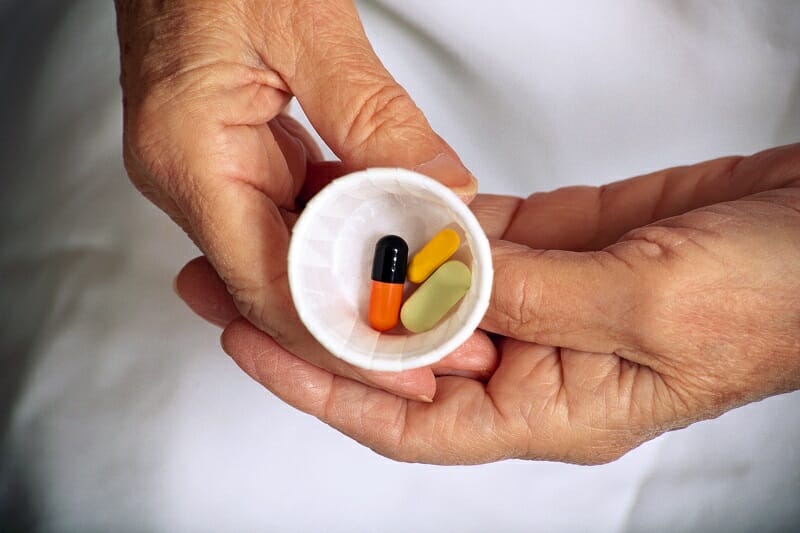Painkillers Addiction Explained
For many people, pain is a fact of life, and pharmaceutical painkillers are an indispensable means of coping with the debilitating impact of pain. However, many painkillers are habit-forming (and pose various risks to physical and mental health) and painkiller addiction now affects many thousands of people in the UK alone, at significant cost to individuals and society alike.
What are Painkillers?
A wide variety of painkillers are available in the UK, including some available over the counter in shops, some sold only in licenced pharmacies under certain controls, some available by prescription only, and some only provided in controlled medical environments such as surgeries or hospitals.

Painkillers can come from any of a range of classes and families of drugs and include some of the most commonly consumed medicines in the UK and worldwide, as well as various heavily regulated and controlled substances, including some extremely addictive drugs commonly used and abused recreationally.
Medical Uses of Painkillers
Painkillers, as the name suggests, are used to treat pain, and the type of painkiller provided – and how it is administered – will depend upon numerous factors including the nature and severity of the pain, the circumstances in which analgesia is sought, and the physiology and condition of the patient.
Relatively mild to moderate pain not requiring medical attention – such as headaches, stomach aches and menstrual pain – may be dealt with by the consumption of mild analgesics such as aspirin or paracetamol, which can be obtained from many shops without a prescription, and which are typically sold in tablet form; more severe pain, which may be chronic and potentially debilitating, may require prescription-only medicines following an assessment by a doctor.
Particularly severe pain such as that resulting from injury or chronic illness may require much stronger painkillers, including those typically administered in a hospital environment via intravenous injection.
As a rule of thumb, patients are able to self-medicate with painkillers in cases of slight to moderate pain, while anything more severe may require medical attention and either a prescription written by a qualified medical professional or the administration of drugs in a controlled environment by a doctor.
Legal Status of Different Painkillers
Because of the sheer variety of analgesics available in the UK, different legal frameworks govern their use. The two main relevant classifications are those provided by the Misuse of Drugs Act 1971 (and the Psychoactive Substances Act 2016), and the Medicines Act 1968 alongside the Prescription Only Medicines (Human Use) Order 1997.
The Misuse of Drugs Act 1971 sets out a broad list of drugs deemed worthy of legislative control, and places them in one of three categories: class A (the most serious substances, with penalties of up to seven years’ imprisonment and an unlimited fine for unlawful possession, and up to life imprisonment and an unlimited fine for supply); class B (moderately serious, with penalties of up to five years in prison and an unlimited fine, and 14 years in prison and an unlimited fine, for possession and supply respectively); and class C (substances not deemed especially dangerous but still requiring control, with penalties of two years’ imprisonment and an unlimited fine and 14 years’ imprisonment and an unlimited fine for possession and supply respectively).
However, some of the drugs controlled by the Misuse of Drugs Act 1971, including those in the most serious classification, class A – for example, morphine, commonly used as a strong analgesic in hospitals and hospices – are deemed essential for medical use and so their possession and supply is not illegal in every instance (otherwise doctors and patients alike could face the risk of imprisonment at any time). The key to the Act is the perspective of whether or not possession (and/or supply) is authorised: possessing a drug, even a class A substance, with a valid prescription is not illegal.
Alongside the Misuse of Drugs Act 1971, the Medicines Act 1968 and the Prescription Only Medicines (Human Use) Order 1997 divide some medications into three categories: prescription-only medicines (POM) which can only be provided by a licensed pharmacist in accordance with a valid prescription; pharmacy medicines (P), which can be provided without a prescription but only by a licensed pharmacist and under certain conditions; and general sales list (GSL) medications, which can be sold in shops, supermarkets etc without a prescription.
While this legal environment might seem somewhat complicated, generally speaking it is relatively easy to abide by the relevant regulations as shops typically do not wish to endanger their status (and the freedom of their owners) by selling drugs illegally, and similarly doctors are unlikely to supply drugs outside the relevant governing framework (as they would risk their livelihoods and liberty by doing so); on the other hand, buying medicines on the street is extremely likely to constitute illegal activity and to place both buyer and seller at risk of arrest and potential imprisonment.
If for any reason you are uncertain about the legal status of any painkilling medication which you may possess, contact a doctor immediately.
Call our admissions line 24 hours a day to get help.
Painkillers: Brands and other Names
A huge number of painkillers are available for use in the UK, featuring substances ranging across various different legal classifications and frameworks, and including some of the most recognisable and commonly consumed medicines in the country, and it is effectively impossible to list every brand on the market.
However, some painkillers – in particular, those in the opioid class – are also used and abused recreationally, and may be widely available on the streets of the UK under a variety of different names. Some street names for commonly available painkillers (including those potentially imported illicitly via the dark web) include:
- Codeine: Cody, Captain Cody, Cs, Schoolboy, Lean, Sizzurp, Purple Drank, Drank
- Hydrocodone: Hydro, NArco Vickies, Vike, Watson-387
- Morphine: M, Dream, Miss Emma, Emma, Monkey, Morf, Morph, Morpho, Mister Blue
- Oxycodone: Hillbilly Heroin, OC, Oxy, Percs, Roxy
- Tramadol: Trammies, Tram, Ultras, Chill Pills, Ts
The Most Common Painkillers
Painkillers include some of the most commonly consumed drugs in the UK, featuring some of the country’s best-known pharmaceutical brands. Although a great variety of drugs can be described as painkillers/analgesics, the majority of the painkillers consumed in the UK fall into three primary categories.

Aspirin and NSAIDs (Non-steroidal anti-inflammatory drugs)
Non-steroidal anti-inflammatory drugs are drugs that tackle pain as well as reducing symptoms of fever, helping to prevent the development of blood clots, and (as the name suggests) decrease inflammation. They work by limiting the activity of cyclooxygenase enzymes, which act in cells to govern inflammation and blood clotting. Commonly consumed NSAIDs include aspirin and ibuprofen.
NSAIDs are not considered to be habit-forming, but pose the risk of various side-effects, some of which can be dangerous and even deadly. NSAIDs feature in a significant proportion of deaths by intentional overdose.
Opioids
Opioids are drugs which act upon opioid receptors in the brain to produce morphine-like effects. Opioids include some of the strongest prescription painkillers provided in the UK, including codeine, and drugs which are typically administered only in hospitals or similar environments such as morphine; they also include some of the most problematic illegal substances of abuse including heroin.
Opioids are extremely addictive and are responsible for thousands of deaths worldwide each year (especially in the USA and certain other parts of the world currently affected by the ongoing “opioid epidemic”), through overdose or long-term damage to health including that associated with addiction.
Paracetamol
Paracetamol is used to treat mild to moderate pain and fever; in combination with other drugs, including opioids, it is also used to treat more severe pain including that caused by cancer or surgery. Paracetamol is the most commonly consumed pain medication in the western world. In the UK, paracetamol is available in many shops and may be possessed without a prescription, though some products containing paracetamol are more heavily controlled substances.
In small doses paracetamol is not considered dangerous, but the consumption of excessive quantities may cause liver damage and other undesirable side effects, while in very high doses it can cause death through liver failure or other means. Paracetamol is not habit-forming, though it is present in some medications which also contain addictive substances (including opioids) and the excessive consumption of these medicines can be fatal.
Painkiller Addiction and how it Develops
When people refer to painkiller addiction, they are typically describing an addiction to opioids specifically: most other painkillers consumed in the UK are not habit-forming.
Addiction is fundamentally a disorder of the brain’s reward system. Repeatedly engaging in certain rewarding behaviour – for instance, consuming opioid painkillers and experiencing their effects – causes an adjustment to the brain’s reward system which drives further compulsive engagement in the behaviour in question, despite an awareness of any negative consequences of doing so.
In the case of opioid painkillers specifically, regular consumption over time can also lead to physical dependence, whereby the affected individual needs to keep taking opioids in order to stave of unpleasant and potentially dangerous withdrawal symptoms.
Painkiller addiction often stems from the consumption of painkillers in response to a medical condition causing pain: individuals given opioid painkillers to treat pain may develop addiction and dependence during their treatment and then be unable to stop taking them even once their painful conditions have subsided (sometimes driving them to take other, potentially illegal, opioids once their course of drugs expires). However, because opioid painkillers are frequently used and abused recreationally, some individuals develop a painkiller addiction without ever having been prescribed painkillers to treat a painful condition.
Regardless of the background to the development of the addiction, anyone taking opioid painkillers regularly over a period of time is at risk of developing addiction and dependence, and such drugs should only ever be taken in strict accordance with the instructions of the prescribing doctor.
The Biological and Neurological Mechanisms of Painkiller Addiction
“Addiction” strictly refers to a disorder of the brain’s reward centres, though it is often conflated in the public mind with dependence, which is a related though distinct condition.
A repeated exposure to rewarding stimuli causes the reward centres in the brain to begin to produce increased quantities of chemicals such as dopamine (associated with feelings of pleasure, wellbeing and reward) when those stimuli are experienced – for example, when the effects of opioid painkillers are felt – and when the behaviours leading to the experience of those stimuli are engaged in. After a while, this adjustment becomes more pronounced and the affected individuals begin to feel compelled to engage in the behaviour in question over and over again (despite being aware of any negative consequences of doing so), in order to experience the positive sensations resulting from dopamine production – and to stave off the negative sensations and emotions resulting from the deficiency of dopamine which occurs when the behaviour stops. This is how addiction develops.
Dependence, meanwhile, develops when the system of someone taking a substance of abuse regularly over time adjusts to the presence of certain levels of that substance and comes to rely upon it in order to function normally. When that substance is withdrawn from the system suddenly – for example, if a dependent individual suddenly stops taking (willingly or otherwise) the substance in question – the system may go into a period of abnormal functioning during which various unpleasant and potentially dangerous symptoms may manifest (a phenomenon known as withdrawal syndrome).
Opioids have a notoriously high physical dependence liability, meaning that dependence can develop very quickly (over as short a period as a few days or a couple of weeks of frequent use) and the withdrawal symptoms associated with opioid dependence are often physical in nature (and can be severe and distressing).
Causes & Risk Factors of Painkiller Addiction
Although addiction is a comparatively well-understood condition, it is not yet entirely clear why one person may develop an addiction (to painkillers or any other substance of abuse) while someone else in similar circumstances may not. Nevertheless, a number of factors are known to increase the risk that any given individual will both engage in painkiller abuse and go on to develop a painkiller addiction.
Genetic predisposition
The role of genetics in the development of an addiction is an area of intense study and it is increasingly widely believed that an overexpression of the gene transcription factor DeltaFosB in certain areas of the brain is a crucial component of almost all forms of addiction; a hereditary predisposition to such an overexpression is likely to be the reason why a family history of substance abuse and addiction is one of the leading risk factors for addiction, including painkiller addiction.
Genetics can also play a role in the form of an increased predisposition to suffer any of a variety of mental health disorders which affected individuals may attempt to self-medicate or escape via the consumption of opioid painkillers; meanwhile, a great number of hereditary illnesses can cause pain which can in turn lead to the consumption of painkillers in quantities and at rates likely to lead to addiction and dependence.
Environmental influences
Many environmental factors have been shown to increase the risk of developing addiction generally and painkiller addiction in particular, including:
- exposure to childhood trauma
- frequent exposure to substance abuse as a child and/or young person
- associating with peers who consume painkillers and/or other opioids
- illness or injury causing pain requiring treatment with opioid painkillers
- easy access to opioid painkillers
- stressful or otherwise challenging life situations
- engaging in other forms of substance abuse
Psychological factors
While every instance of addiction is unique, as is every addict, various psychological factors have been shown to increase the likelihood that an individual will develop a painkiller addiction, including:
- suffering from mood disorders including depression and anxiety
- feelings of low self-esteem
- a strong desire to fit in
- pessimism regarding life prospects
- experiencing social isolation and withdrawal
- stress
- feelings of oppression or discrimination
Co-Occurring Disorders with Painkiller Addiction
When a substance use disorder co-occurs with a mental health disorder the condition is known as dual diagnosis. Dual diagnosis is relatively common in cases of painkiller addiction, as the ease of access to many painkillers means that they are often used to self-medicate mental health issues or as a means of escapism, while addiction itself can also cause numerous mental health issues (especially depression and anxiety) to develop.
Dual diagnosis often requires specialist treatment as both conditions need to be treated simultaneously and each may interfere with the treatment typically provided for the other.
Common Misconceptions About Painkillers
Painkillers are the subject of numerous misconceptions on the part of the general public, some of the most common of which include:
- “All painkillers are addictive”: this is not the case. Many painkillers are not habit-forming,
- “Taking prescription painkillers means I won’t get addicted”: some prescription painkillers are highly habit-forming.
- “If I have a valid reason to take painkillers I won’t get addicted”: many painkiller addicts had very good reasons to begin taking painkillers.
- “It’s best to stay away from painkillers altogether”: pain can be extremely debilitating and painkillers can play a very valuable role, but should only be taken in accordance with instructions on packaging or, in the case of prescription-only medicines, the instructions of the prescribing doctor.
Signs, Symptoms and Effects of Painkiller Addiction
It can be difficult – at times, impossible – to identify the presence of an addiction: the stigma associated with the condition (and potential reputational and professional ramifications of its being revealed) can mean that addicts go to great lengths to conceal their habits. In the case of painkiller addiction specifically, it can be even more tricky, as unlike many illegal substances of abuse painkillers are commonly found in domestic situations and their use often does not prompt questions from others.

However, some signs may betray the presence of painkiller addiction (though it is important to note that there may also be other, less concerning causes behind them).
Psychological and mood symptoms
Some common psychological or mood-related symptoms of painkiller addiction include:
- mood swings
- euphoria
- depression
- irritability
- aggression
- anxiety
- psychosis
- paranoia
- suicidal ideation
Behavioural symptoms
Some behavioural symptoms typically associated with painkiller addiction may include:
- lying
- social isolation
- stealing to obtain more painkillers
- visiting multiple doctors in order to obtain additional prescriptions (“doctor shopping”)
- engagement in risky behaviour
Physical symptoms
Physical symptoms of painkiller addiction could include:
- constipation
- nausea and vomiting
- pinpoint pupils
- sedation
- slurred speech
- itchy, flushed skin
- increased risks for heart attack and other cardiovascular complications
- respiratory depression
- tolerance
- seizures
- coma
- death
Call our admissions line 24 hours a day to get help.
Possible Life Consequences of Painkiller Addiction
As with any addiction, an addiction to painkillers can have very serious negative consequences for the life circumstances and prospects of the addict. Some of the more prominent risks may include:
- social isolation
- financial ruin
- joblessness
- crumbling interpersonal relationships
- legal trouble
- homelessness
Long-Term Health Effects of Painkiller Abuse
Alongside the risk of addiction and dependence (and any associated health impact), and of death or permanent impairment due to overdose, the long-term abuse of painkillers can have various other ramifications for physical and mental health. Depending on the type and quantity of painkillers consumed, and the duration of the abuse, some more prominent long-term effects include:
- liver damage
- lowered immunity
- permanent damage to the respiratory system
- permanent neurological damage resulting in cognitive impairment
- gastrointestinal difficulties
- long-term mental health issues including major depressive disorder and/or psychosis
Painkillers Overdose Explained
Overdose occurs when someone consumes too much of a substance for their system to handle effectively. An overdose of painkillers can be fatal, with the mechanisms varying from one form of painkiller to another. In the case of opioid painkillers specifically, overdose typically results from respiratory depression: prominent symptoms include the “opioid overdose triad” of restricted breathing, pinpoint pupils and limited consciousness or unconsciousness. If you observe any of these symptoms in someone you know to have taken opioid painkillers, call the emergency services straightaway.
Signs and Symptoms of Withdrawal
Someone who has been taking opioid painkillers for long enough and in sufficient quantities to have developed dependence may suffer from opioid withdrawal syndrome if they suddenly stop taking the drugs. While each case of opioid withdrawal is unique, some of the most prominent withdrawal symptoms include:
- cravings
- flulike symptoms
- muscle pains
- watery eyes
- insomnia
- extreme restlessness
- tremors
- sweating
- muscle spasms
- yawning
- fatigue
- cold clammy skin
- diarrhoea
- high blood pressure
- dilating pupils
- aggression
- abdominal cramps
- mood swings
- depression
- agitation
- suicidal ideation
Overcoming Painkillers Addiction
Painkiller addiction is an increasingly serious problem in the UK, affecting many thousands of people. Fortunately, however, there are now a number of treatment centres operating around the country with great expertise in the treatment of painkiller addiction specifically. With professional help, even the most severe and long-lasting painkiller addiction can be overcome. If you are suffering from a painkiller addiction, contact an addiction specialist to find out about treatment centres and options which might be appropriate for you.
Inpatient and Outpatient Treatment
Some residential rehabilitation (rehab) facilities provide treatment on either an inpatient or outpatient basis.
Inpatient stays typically last between 30 and 90 days, with holistic addiction treatment programmes including detoxification (detox) and therapy being provided in secure, pleasant and confidential settings conducive to healing and recovery. Treatment is usually augmented with bespoke dietary and fitness plans, among other elements, and is followed by up to a year’s free aftercare to ensure the optimal basis for recovery.
Outpatient treatment may be appropriate for individuals who do not feel able to take the necessary time out of their daily lives and responsibilities which inpatient treatment would require. Some appointments will be conducted on-site at the facility, with other elements of the programme needing to be carried out independently. Outpatient addiction treatment may be challenging as it does not take addicts away from their environments of substance abuse within which addiction has developed.
Call our admissions line 24 hours a day to get help.

Painkillers Detox Process
Detox is a vital part of the addiction treatment process as it cleanses the addict’s system of substances of abuse, enabling them to focus on therapy without the pressures of dependence. During detox, withdrawal symptoms may manifest, some of which can be extremely distressing and dangerous (though potentially alleviated at least to some extent with the help of medication); as a result, it is vital that if you are addicted to painkillers you do not attempt to go through withdrawal independently. Always contact a doctor before embarking on any detox process.
Painkiller Addiction Treatment Medications
Various medications can be prescribed for the treatment of opioid addiction specifically, though some of these are typically considered more appropriate for individuals addicted to extremely problematic illegal opioids such as heroin. Some medications may be used as a substitute for other opioids enabling dosages to be managed and tapered down over time; others block the actions of opioid receptors in the brain, negating the effects of opioids; others still address specific withdrawal symptoms during and after any detox process.
While there is no pharmaceutical cure for painkiller addiction, medication can certainly assist with overcoming dependence and with the process of detoxification and withdrawal. If you are addicted to painkillers and wish to find out more about the role which medication can play in your treatment, speak with an addiction specialist.
Therapy for Painkillers Addiction
Therapy lies at the heart of all addiction treatment. Therapy both uncovers and tackles the psychological and behavioural causes of addiction, and prepares the addict for a life of abstinence by enabling them to remediate those problematic behaviours and providing them with psychological defence mechanisms against relapse.
In rehab facilities, therapy is provided in a range of models and formats; each addict may need to experiment with different therapy methodologies before settling on a structure which best suit their own needs.
Individual therapy
Many therapy models are provided in one-to-one settings, with a therapist working with a client to address their addiction and improve their thought processes and behaviours. Common therapy models deployed in addiction treatment include cognitive behavioural therapy (CBT), dialectical behavioural therapy (DBT) and motivational interviewing (MI), though any of a great number of other therapeutic approaches may be available depending on the facility.
Group therapy
Group therapy enables members of a group (typically between three and 12 people) to share experiences, advice and support, and to give each other new and different perspectives on their behaviours and opinions.
Family therapy
The family can play a crucial role in an addict’s recovery – and family members who have been damaged by the behaviour of their addicted love one can themselves also benefit significantly from therapy. Various approaches to family therapy may be found in rehab; for more information, contact an addiction professional.
Experiential therapy
Experiential therapy uses a variety of different experiences – ranging from activities such as rock climbing and hiking through to sculpture and listen to music – to allow addicts to reinterpret and contextualise their experiences and to work through potentially challenging and difficult memories.
Other Kinds of Intervention
If someone you know is addicted to painkillers, it can be very tempting to intervene in an attempt to help them. However, intervening can do more harm than good, including by alienating the addict, potentially permanently. If you wish to carry out an intervention to benefit an addictive friend or loved one, contact an addiction specialist to discuss your specific situation and to get advice on how best to carry out an effective intervention.
Painkiller Abuse and Different Demographics
Painkiller addiction is a problem affecting every corner of the UK, and individuals from every demographic. While painkiller abuse is slightly more common amongst younger people, it is a challenge present in every age cohort and every ethnicity, and affecting people at similar rates in urban centres and the countryside alike.
Teen painkillers abuse
Painkillers are especially popular recreational drugs amongst young people, primarily because of their widespread availability and low cost: over 7% of Britons aged between 16 and 24 misuse prescription-only painkillers each year. Teenagers are especially susceptible to addiction and various other health risks; if you know a teenager who is abusing painkillers it is imperative that they get help as soon as possible. Contact an addiction specialist for advice and support.
Painkillers Addiction Statistics
- Prescriptions for opioid painkillers rose by 60% in the UK over the decade to 2019.
- Over 23 million prescriptions for opioid painkillers were written in 2018 in England and Wales alone.
- Opioids killed over 2,000 people in England and Wales in 2016.
- Opioid painkiller tramadol was responsible for 240 deaths in England alone in 2014.
- Over 150 people in England and Wales died after taking codeine in 2018.
Ready to get Help for Your Addiction?
If you are struggling with an addiction to painkillers, your life is at risk: painkillers can be extremely dangerous, and painkiller addiction can have devastating long-term consequences for both physical and mental health. However, help is at hand: if you are ready to seek treatment, there are numerous high-quality facilities operating around the country which can help you overcome your addiction.
Get help today
The sooner you are able to reach out for help, the sooner you will be able to embark on your journey to recovery. Get in touch with your GP and/or an addiction specialist today to discuss your addiction and to find out about what treatment options might be available to you. Pick up the phone and take the first steps on the road back to happiness and health.
FAQ
Sources
- https://en.wikipedia.org/wiki/Analgesic
- https://www.bbc.co.uk/news/health-48082736
- https://en.wikipedia.org/wiki/Nonsteroidal_anti-inflammatory_drug
- https://en.wikipedia.org/wiki/Misuse_of_Drugs_Act_1971
- https://www.talktofrank.com/drug/opiateopioid-painkillers
- https://health.clevelandclinic.org/6-myths-about-painkillers/
- https://en.wikipedia.org/wiki/Prescription_drug#United_Kingdom
- https://drugabuse.com/addiction/list-street-names-drugs/#prescription-drugs
- https://en.wikipedia.org/wiki/Paracetamol
- https://www.ukat.co.uk/opiates/vicodin/
- https://en.wikipedia.org/wiki/Addiction_vulnerability#Environmental_factors
- https://www.ncbi.nlm.nih.gov/pmc/articles/PMC5568795/
- https://www.therecoveryvillage.com/painkiller-addiction/side-effects/#gref
- https://www.addictioncenter.com/addiction/addiction-in-the-uk/
No matter where you live, there is a drug rehab center that can help you overcome your addiction. We'll help you find it.
Select a County



